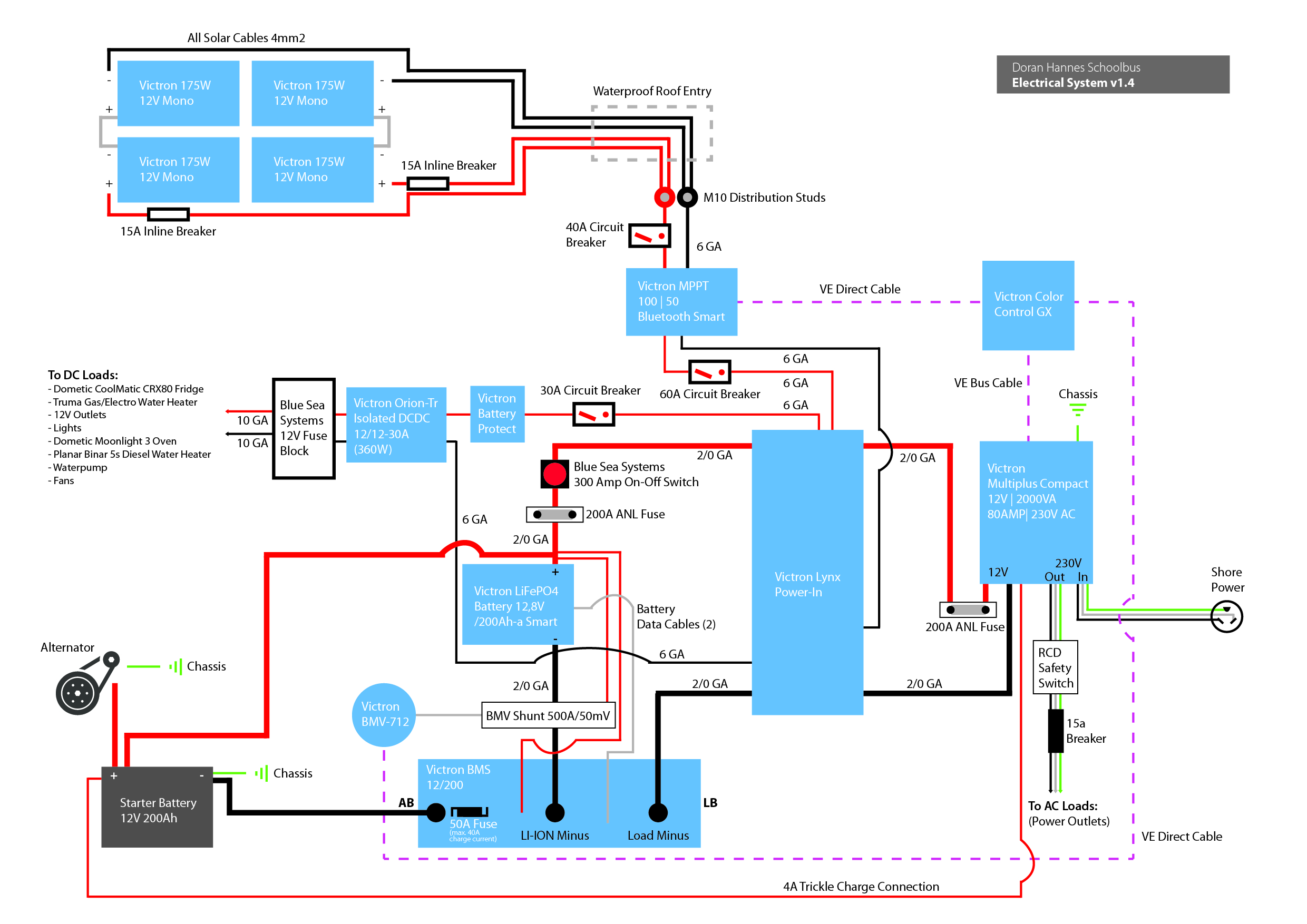Dear all,
as I am new with all Victron components and quite francly electrics in general, I would really appreciate some opinions on my system plan. I have already put a lot of effort into this and read lots of articles and info but in the end every system is individual in itself and I am by far no expert yet.
I am planning to install all this into a bus that I am currently converting into an RV in Germany. I'm saying that to make clear that there is no current "house electricity" in the bus except cables throughout the walls to all appliances and outputs. For all 12V wiring I ran positive AND negative wires, so I guess the Orion DCDC converter might be an unneeded add-on in my case.
I don't really have many specific questions anymore. I was more hoping for someone with experience in Victron equipment to approve/or help improve my plan.
The only specific questions I am left with concerns the 4A trickle charge output of the Multiplus. Is it okay to just hook this up to my start battery positiv or do I need to be concerned about overcharging this battery once full?
I thank everyone who might get involved and look forward to any input you all might have.
Cheers,
Doran


